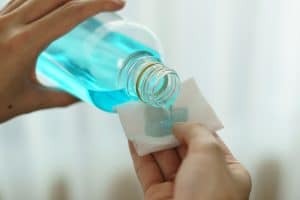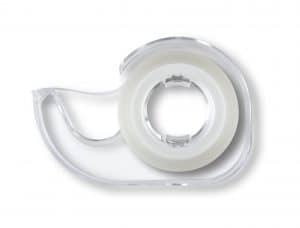Pad Print Ink Testing
Chemical Resistance, Adhesion, Cross Hatch & Abrasion Testing
How to choose the best pad printing ink for your unique project?
Experts in the Trans Tech Ink Lab can identify the best formulation for your decorating needs after considering a vast number of factors, including:
- Substrate
- Industry
- Color
- Ink type (1 or 2 component or UV)
- Needed capabilities
- Adhesion requirements
- Abrasion requirements
- Opacity
- Printing speed
- Need for pre-treatments
- Desired number of prints
Once you have selected the best ink for your application- why should you test performance?
For successful pad printing decoration, dried or cured ink must remain completely intact on the decorated surface- even in the face of challenges like rubbing, abrasion, and exposure to chemicals. Quality ink suppliers can test inks and train your team to perform effective in-house testing as well. With thorough testing, you can avoid compromised decoration and resulting product scrap.
When should you test your Pad Printing Ink?
To successfully test the durability of your pad printing ink, you must print several samples and ensure the ink is completely cured or dry. For UV inks, this will happen very quickly. For traditional ink- longer curing times will be required. If you want to reduce the required curing time- you can use drying tunnels. Pre-treatments such as corona, plasma, and flame treatments can also modify a product’s surface for superior ink adhesion.
What kinds of tests are appropriate for Pad Printing Ink?
There are four kinds of tests widely performed on pad printing inks.
1) Chemical Resistance Test
2) Adhesion Test
3) Cross-Hatch Test
4) Abrasion Test
Chemical Resistance Testing
Resistance testing ensures that dried or cured decoration will not be compromised by exposure to chemical elements. Chemical resistance testing can be done using methyl or isopropyl alcohol. In our demonstration video, we use 99% isopropyl alcohol. To perform the test, pour a small amount of alcohol onto a folded rag or paper towel. Rub the alcohol about ten times over a decorated part with light pressure. If the ink remains durable and no ink comes off onto your rag or paper towel, the ink has passed the chemical resistance test.
Adhesion Testing
Adhesion testing ensures that ink properly adheres to or sticks to your part, even when one tries to “peel” the ink off. The adhesion test, also known as the tape test, is conducted by applying a simple piece of tape on top of a decorated part. Rub the tape firmly onto the part about eight to ten times. Then, holding the tape at a 90-degree angle to the part, tear it off forcefully. If no ink comes off onto the tape, the ink has passed adhesion testing.
Cross-hatch Testing
Cross-hatch testing is similar to adhesion testing- with a key variation. To perform the test, use a razor or knife to cut into the decorated product in a cross-hatch or “x” formation. Then apply tape on top of this keyed product. As with adhesion testing, rub firmly on the tape about 8 to 10 times, then forcefully pull the tape off at a 90-degree angle. You can see the results of this test not only by ensuring that no ink has adhered to the tape but also by checking the edges of the cuts under a microscope. If the ink is performing correctly- examination under a microscope will show no ink has been removed along the edges of the incision.
Abrasion Testing
Finally, abrasion testing ensures that ink cannot be scratched off a decorated part or component. To perform an abrasion test, try scratching aggressively with your fingernail directly on the decorated segment of your part. If the ink is not removed, the abrasion test has been passed.
Summary
A quality pad print ink supplier can provide expert ink testing and train your team to conduct effective chemical resistance, adhesion, cross-hatch, and abrasion test.
Would you like to know more?
Please get in touch. We would love to hear from you.

Maurizio Caporali, Process Technician at Trans Tech, has over 36 years of pad printing experience. He has solved every possible type of printing challenge imaginable and is still inspired to help others succeed in their pad printing projects worldwide. His deep expertise encompasses the entire pad print process, including pad print machines and pad print consumables and how they best work together for optimal results.






